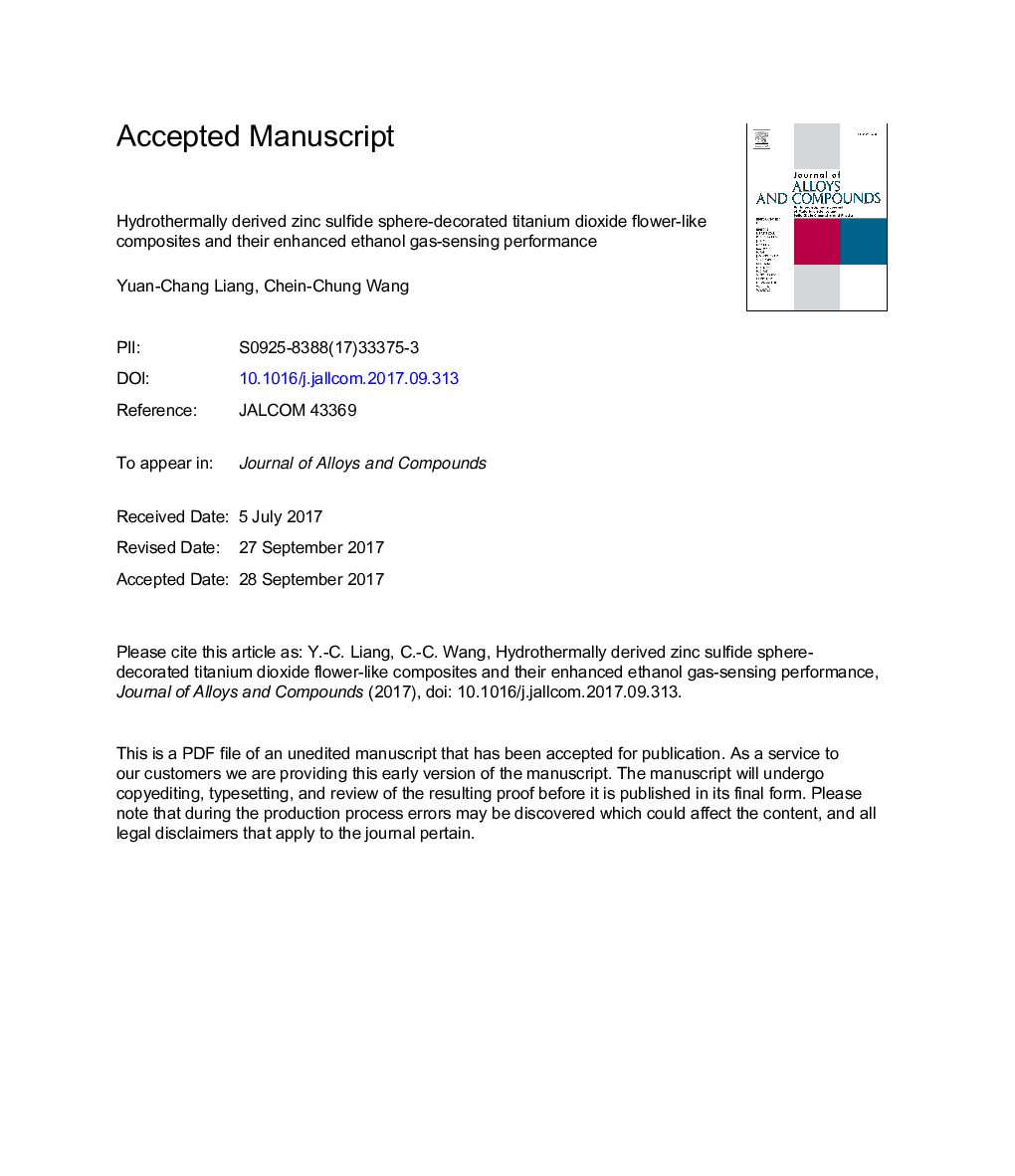| Article ID | Journal | Published Year | Pages | File Type |
|---|---|---|---|---|
| 5458538 | Journal of Alloys and Compounds | 2018 | 35 Pages |
Abstract
Zinc sulfide (ZnS) sphere-decorated titanium dioxide (TiO2) flowers at various ZnS hydrothermal synthesis durations were synthesized using a two-step facile hydrothermal methodology. The ZnS hydrothermal synthesis duration affected the content and distribution of ZnS spheres decorated on the surfaces of TiO2 petals. Thus, the separate and random distribution of these spheres, without considerable aggregation, could be obtained by adequately controlling the ZnS hydrothermal synthesis duration. A structural analysis demonstrated that the as-synthesized ZnS spheres and TiO2 flowers were in crystalline cubic zinc blend and rutile phases, respectively. Moreover, the gas-sensing response of the TiO2 flowers to ethanol vapor markedly enhanced after the decoration of the ZnS spheres. An optimal ZnS hydrothermal synthesis duration of 2Â h for the TiO2-ZnS composites was determined to result in the highest gas-sensing response at the given gas-sensing test condition. The strongly favorable ion-species interactions in the gas sensing of ZnS spheres and the formation of TiO2/ZnS heterojunctions in the TiO2-ZnS composites accounted for the enhanced gas-sensing responses of TiO2 flowers decorated with ZnS spheres in this study.
Related Topics
Physical Sciences and Engineering
Materials Science
Metals and Alloys
Authors
Yuan-Chang Liang, Chein-Chung Wang,
